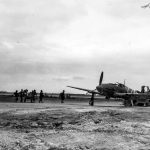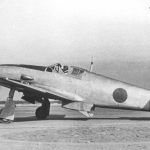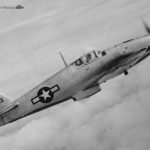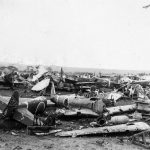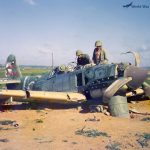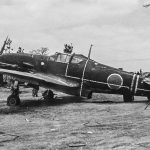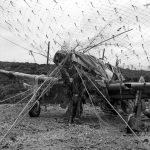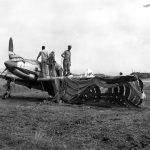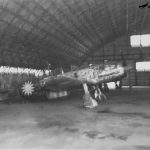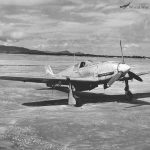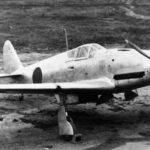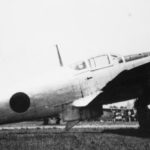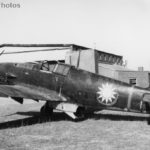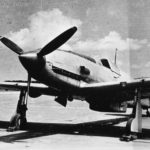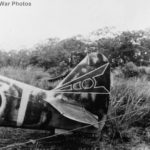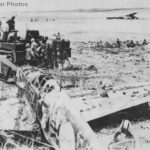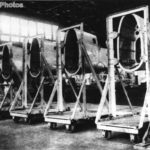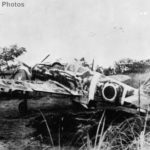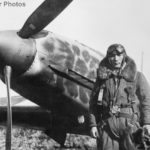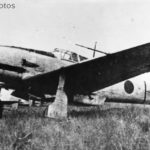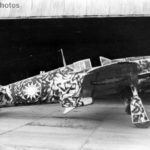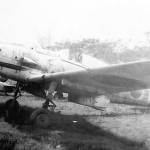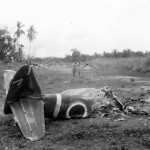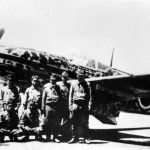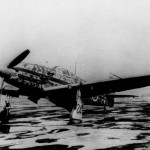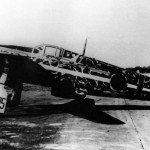“Yontan Tony” test fly 21 July 1945
Okinawa Yontan Airfield 1945
Hien of Akeno Flying School
Ki-61 Yokota
Ki-61 XJ003 Eagle Farm Australia
Ki-61 wreck
Wrecks on Okinawa 1945
Ki-61 kill markings
Ki-61 Okinawa
Chofu Airfield 15 August 1945
Ki-61 Hien Luzon 1945
Ki-61 Hien Ki-100 Wrecks at Fukuoka
Ki-61 Hien at Yontan Airfield Okinawa 1945
Ki-61 Hien at Yontan Airfield Okinawa 1945
Ki-61 Hien at Yontan Airfield Okinawa 1945
TAIC-9 ex XJ003 at NAS Patuxent River
Ki-61 Hien 68th Sentai Cape Gloucester
68th Sentai Cape Gloucester
Ki-61 Eagle Farm Airfield in Brisbane
Chinese Nationalist Air Force
Chinese Nationalist Air Force
Tony of the 149 Shinbu-Tai (Special Attack Unit) Ashiya AB
Hien #776 149 Shinbu-Tai 1945
Ki-61 110 Shinbu-Tai, Japanese Special Attack Units
Ki-61 19 Sentai
Early Ki-61 “Tony” 1942
Ki-61 assembly line
Parafrag bombs fall on grounded Ki-61s in their revetments at the Vunakanau Airfield on Rabaul during the October 12, 1943 raid
Captured Ki-61 of the 68 Sentai 4
Captured Ki-61 of the 19 Sentai, 1945
Ki-61 “Tony” 41
Captured Ki-61 “Tony”
Ki-61 during tests in 1942
Ki-61 of Chinese Nationalist Air Force, 1945
Ki-61-I “Tony” at Akeno, 1942
Ki-61-Ia of the 68 Sentai, Cape Gloucester 1943
Ki-61-I KAI c captured by Nationalist Chinese troops, 1945
Ki-61 “Tony” and LVT in Okinawa, 1945
Ki-61 assembly line 2
Ki-61-I Ko #263 of the 68 Sentai 7
Ki-61-I Ko “Tony” #263 of the 68 Sentai, pilot Captain Shogo Takeuchi
Ki-61 assembly line 3
Early Ki-61 in flight 1942
Ki-61 of the 68 Sentai, pilot Captain Shogo Takeuchi
Ki-61 radiator air intake located under the fuselage
Kawasaki Ki-61 Hien of the 68 Sentai 5
Maj Teruhiko Kobayashi and his Ki-61-I Tei of 244th Sentai, Japan 1945
Ki-61 test 1942
Kawasaki Ki-61 Hien #05 of the 37th Kyoiku Hikotai, Formosa 1944
Ki-61-II Hien of the 6th Fighter Bomber Group CNAF Beijing, November 1945
Maj Teruhiko Kobayashi and his Ki-61-I Tei of 244th Sentai, Japan 1945 2
Captured Ki-61 Hien of the No 19 Hiko Sentai at Clark Field
Ki-61 #70 of the 244 Sentai
Japanese Boy atop wreck of Kawasaki Ki-61 Hien Tony in Japan 1945
Ki-61 of the 19th Sentai Philippines 1945
Ki-61 burns at Kamiri Netherlands East Indies after attack of the 3rd Bombardment Group 8th BS 5th Air Force May 21 1944
Ki-61-I Kai d Hien “Tony” of the 19th Sentai Clark Field 1945
Captured Japanese Kawasaki Ki-61 Hien Tony Fighter in Philippines
Ki-61-I Kai d Hien of the 19th Sentai Clark Field 1945
Kawasaki Ki-61 Hien Tony wreckage
Ki-61-I Hien of the 2 Chutai 68 Sentai Cape Gloucester 1943
Captured Kawasaki Ki-61 Hien and F4U Corsair 419 Okinawa 1945
Kawasaki Ki-61 Hien/Tony from 19 Sentai with drop tanks at Clark Field 1945
Kawasaki Ki-61 Hien tail section
Ki-61 of the 244th Sentai crew
Kawasaki Ki-61 Hien Gi in cockpit
Ki-61 Tony of the 78th Sentai under attack Wewak New Guinea 1944
Ki-61-I Kai Hei Tony of the 19 Sentai Luzon 1945
Ki-61-I Tei 244th Sentai Maj Teruhiko Kobayashi February 1945
Ki-61 Tony 295 of the 244th Sentai, pilot: Cpt Teruhiko Kobayashi
Kawasaki Ki-61 “Hien” (飛燕, flying swallow) Japanese fighter aircraft of World War II. When the Americans encountered the fighter was first identified him as the Bf-109, then suspected that it is a copy of the Italian design. Consequently, he was given the code name “Tony”, implying Italian roots. Official name: 三式戦闘機 – rikugun 3 shiki sentouki (Army Type 3 Fighter)
Ki-61 was designed by Takeo Doi and his deputy Shin Owada in response formulated by Kaigun Kōkū Hombu (Imperial Japanese Navy Aviation Bureau) at the end of 1939 needs two new fighters based on the new inline engine. They had a license to use a copy of the German Daimler Benz DB601 engine (the license was acquired in 1937), produced under the name Ha-40 engine by companies belonging to Kawasaki Akashi. Ki-60 was to be heavily armed interceptor, which is used for offensive operations at low and medium altitudes. Ki-61 would be his complement, lower wing loading, more maneuvering and more lightly armed.
In all of its versions, the Ki-61 Hien was a single-seat, single-engine fighter made almost entirely from metal alloys; only the control surfaces were fabric-covered. It was ruggedly constructed, and was relatively heavy for a Japanese fighter.
The aft part of the triangular cross-section fuselage was long for a fighter powered by a DB-601 engine (or one of its copies), and featured a type of “razorback” dorsal structure behind the cockpit. The engine was in the nose, together with a pair of 12.7 mm caliber Ho-103 machine guns. The Ho-103 was a light weapon for its caliber (around 23 kg) and fired a light shell, but this was compensated for by its rapid rate of fire. The ammunition capacity was limited, having only around 250 rounds for each weapon. The windshield was armoured together with a 13 mm armoured steel plate in the pilot’s seat. Fuel capacity was around 550 l (145 gal) allowing for a long range (over 1,000 km (540 nm) without external tanks).
The wings were quite large in area, giving a low wing loading. They housed another pair of machine guns or cannons, as well as the undercarriage gear when raised.
Variants:
Ki-61 Prototypes: 12 build
Ki-61-I-Ko – fully retractable tailwheel, 2×7,7 mm Type 89 machine guns in the wings and 2x synchronized 12,7 mm Ho-103 machine guns in the forward decking. Capable of carrying one 151 L drop tank or a light bomb.
Ki-61-I-Otsu – tailwheel retraction mechanism was unreliable, the aircraft was modified accordingly. 4 x 12,7 mm Ho-103 machine guns
Ki-61-I-Otsu Kai – was built in conjunction with the Otsu variant, the wing machine guns were replaced by German Mauser MG 151/20 20 mm cannons.
Ki-61-I-Ko Kai – was built in conjunction with the Ko variant, the wing machine guns were replaced by German Mauser MG 151/20 20 mm cannons.
Ki-61-I-Kai Hei – variant with 2 x 20 mm Ho-5 cannon in the wings and two synchronized 12,7 mm Ho-103 machine guns.
Ki-61-I-Kai Tei – variant with 2 x 30 mm Ho-105 cannon in the wings and two synchronized 12,7 mm Ho-103 machine guns.
Ki-61-I One experimental aircraft with new evaporation system, as used on the Heinkel He 100. It was the fastest Ki-61 built, achieving 630 km/h
Ki-61-II Prototypes (8 build) with 1120 kW (1500 hp) Ha-140 engine and first flown in December 1943 – project cancelled.
Ki-61-II-Kai – Pre-production version which reverted to the Ki-61-I wing, a 220 mm fuselage stretch, enlarged rudder, and Ha-140 engine; 69 built.
Ki-61-II-Kai Ko – armed with 2 x 12.7 mm machine guns in the wings and 2 x 20 mm cannon in the fuselage.
Ki-61-II-Kai Otsu – Hien armed with 4 x 20 mm cannon.
Ki-61-III or Ki-61-II Kai Hei – cut-down rear fuselage and a canopy design which was later used by the Ki-100-I-Otsu
References:
I.J.Army Kawasaki typ 3 & 5 Fighter – Model Art Magazine 428, 1994
Kawasaki Ki.61 Ki.100 Hien in Japanese Army Air Force Service – Richard M. Bueschel, Osprey Publishing Aircam Aviation Series 21
P-38 Lightning vs Ki-61 Tony New Guinea 1943-44 – Donald Nijboer Osprey Duel 26, 2010
Kawasaki Ki 61 Hien -Bulletins Techniques De L’Aviation Japonaise 1925-1945 №1 – Takeda Tetsuya, Takamori Junko, Aditions d’Along 2005
Kawasaki Ki-61 Hien – Famous Airplanes of the World 98 – Bunrin Do, 1978
Kawasaki Army typ 3 Fighter “Hien” Tony – Famous Airplanes of the World 17 – Bunrin Do, 1989
The Kawasaki Ki-61 Hien – Rene J. Francillon, Profile Publications Number 118
Ki-61, Ki-100, Ki-48 – Mechanism of Military Aircraft 2
Ki-61 and Ki-100 Aces – Nicholas Millman, Osprey Publishing Aircraft of the Aces 114
Kawasaki Ki-61 Hien Ki-100 – Leszek A. Wieliczko, Kagero Monographs 58
Japanese Aircraft of the Pacific War – R. J. Francillon, Putnam & Company 1970
Japanese Aircraft Equipment 1940-1945 – Robert C. Mikesh, Schiffer 2004

